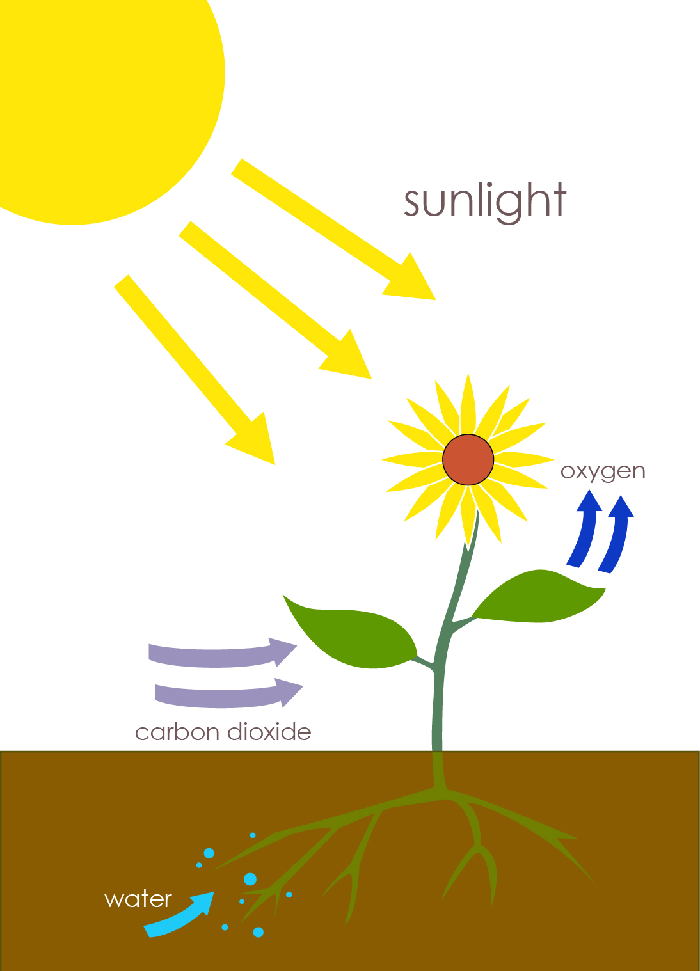The word “Photosynthesis“ is not hard to understand even if it might sounds difficult. “Photo” is the Greek word for “Light” and “synthesis” for “putting together”. Photosynthesis is a process of plants and other organism to convert the light energy into chemical energy, which they use later for the organisms’ activities like transforming.
In general there are two types to differ. The oxygenic photosynthesis and the anoxygenic photosynthesis, but oxygenic photosynthesis is the most common one.
How does photosynthesis work?
For the process of photosynthesis, the plant needs carbon dioxide, water and sunlight.
The process happens in the leaves of the plants. Inside there are cells, tiny structures called chloroplasts. Because of the chemical chlorophyll the leaves have their green colours. The chlorophyll absorbs the energy from the sunlight. This energy is used to split the water molecueles into hydrogen and oxygen. The leaves release the Oxygen into the atmosphere. Hydrogen and carbon dioxide are used to form the glucose or the “food“ for the plants. So one part of the glucose can be used for the development and growth of the plant and the other part will be saved in the leaves or fruits for later use.

– by Verena K. –
sources:
http://photosynthesisforkids.com/
https://www.livescience.com/51720-photosynthesis.html
